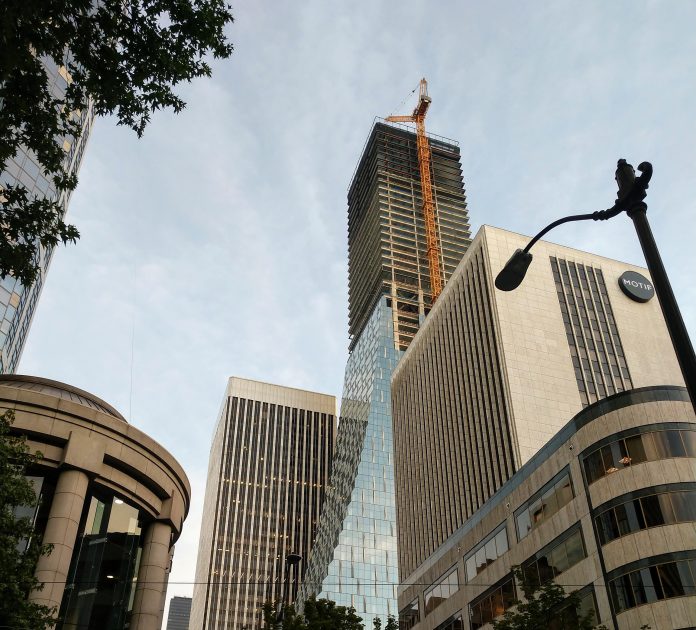First of all, we in the publication team would like to thank our readers to continue to support our work.
More people than ever are reading our work. While in 2018, we averaged 34,600 users visiting our online publication each month, so far in 2019, we’re averaging more than 45,000 users per month. As far as highest readership articles, the winningest formula continues to be transit maps. Seattle Subway dropped a new vision map which rocketed to the top of our 2019 charts, and transit maps from years past continue to be favorites. However, our readership is also carried by thoughtful pieces from a variety of authors on a wide breath of topics.
Our senior reporter Natalie Bicknell has stayed on top of topics as varied as Oregon’s rent control legislation, freeway lids, Shoreline light rail station access, Seattle’s addiction to road salt, the Green New Deal, and Africatown’s equitable development plans in the Central District.
Our lead transportation reporter (and senior editor) Ryan Packer has continued to closely track Vision Zero efforts, the lack of progress on reducing pedestrian deaths, and how both our local and state transportation agency should do more (e.g., not spend $4.4 million begging people to drive in the new SR-99 tunnel).
Our in-house planning wonk (and senior reporter) Stephen Fesler did deep dives on the Southeast King County bus restructure, the latest state transportation appropriations bills, Cascadia high-speed rail developments, and long-range airport planning–to name just a few of many articles. Stephen broke the story that a second Sea-Tac-sized airport would be needed to meet projected 2050 demand, according to the Puget Sound Regional Council.
Chris Priest has reported on 35th Avenue NE drama from a local’s perspective. Through his reporting, we watched a plan for a bike lane stalled out by backlash, mediation, more delay, and finally the regretful decision to scrap bike lanes and not build a safe design. He has the scars to prove it. When he’s not risking his life to report on and advocate for a safe 35th Avenue, he’s also a technology reporter for us, and looked at smart city plans in Toronto.
Our Tacoma correspondent Rubén Casas has covered the City of Destiny’s accessory dwelling reform (part 1 and part 2), changing attitudes toward parking, and what makes a great city.
Meanwhile, our number-cruncher and research digester Michael Goldman looked at Seattle crossing 750,000 in population and how Amazon’s slowdown in hiring corresponds with a slowdown in local rents. Pedestrian watchdog Troy Heerwagen named Denny and Steward Seattle’s worst intersection again after his yearly contest voted on by readers. Columnist and sustainable building nerd Mike Eliason sparked the call for an Interbay ecodistrict, which could bear fruit in coming years if you help us continue to press policymakers, and he took a cold hard look at the future of public golf courses.
We’ve also gotten timely guest pieces, such as a compelling response to Seattle is Dying narrative on homelessness by professor Sara Rankin and former council aide Michael Maddux. Paige Malott looked at how the Center City streetcar could serve the new Downtown cruise terminal. Conor Bronsdon and city council candidate Andrew Lewis opined about the great opportunity Seattle has to lead on mass timber building technology.
For my part, I wrote about how many of Seattle’s suburbs are blocking housing growth, the case for rent control, the Koch anti-transit crusade that could be marching from Phoenix to Seattle, and the new graduated real estate excise tax the state legislature passed. I also served as our liaison with the Move All Seattle Sustainably (MASS) coalition and wrote about MASS’s efforts, like what we learned from our council candidate forum on transportation, how we want the City to do more to get ready for the Seattle Squeeze, and why we should extend transit priority extended on Third Avenue. Additionally, Natalie wrote about MASS’s 2019 budget priorities–three resolutions have passed and we’re still working on getting the rest passed.
It’s a lot of work from all-volunteer writers and editors, but we’re happy to do it. It means we get to further the dialogue and push Seattle (and beyond) toward becoming the inclusive and sustainable city we want it to be. As a climate crisis and a constitutional crisis bears down upon us, we have to do something, and independent urbanism-minded advocacy journalism gives us a way to fight back and model a way forward.
We can’t do it without you. Please consider becoming a subscriber in order to allow us to continue to grow our coverage and advocate for sustainable urbanism.
Doug Trumm is publisher of The Urbanist. An Urbanist writer since 2015, he dreams of pedestrian streets, bus lanes, and a mass-timber building spree to end our housing crisis. He graduated from the Evans School of Public Policy and Governance at the University of Washington in 2019. He lives in Seattle's Fremont neighborhood and loves to explore the city by foot and by bike.



